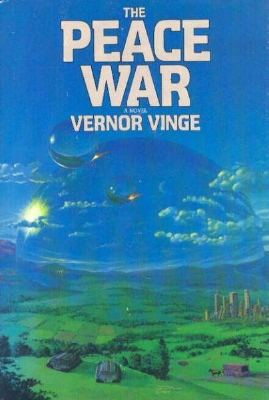 The heroes of Vernor Vinge’s The Peace War are members of a scattered society of tinkers who — without any real industrial base — manage to develop and produce very high-tech devices including fast, small computers. I’m trying to figure out how realistic this is.
The heroes of Vernor Vinge’s The Peace War are members of a scattered society of tinkers who — without any real industrial base — manage to develop and produce very high-tech devices including fast, small computers. I’m trying to figure out how realistic this is.
The software side seems entirely feasible. Today’s open source community has shown that small groups of talented, motivated people can create enormously sophisticated artifacts.
On the other hand, hardware is a problem. Vinge’s tinkers cannot exist in today’s world where fast computers are made only in billion-dollar fabs. Perhaps it will become possible to grow sophisticated chips using hacked bacteria, or maybe new fabrication technologies such as 3D printing will evolve to the point where they can produce realistic large-scale integrated circuits.
An end point for 3D printing technology is the Diamond Age‘s matter compiler, which can produce almost anything based on a plan and a “feed” of energy and atoms. But of course in that book, the feed is a centrally controlled resource. The “seed” technology from the end of The Diamond Age is tinker-friendly, but very far-fetched for now.
The recent near-doubling of hard disk prices due to flooding in Thailand shows how fragile our supply chains are. It’s nice to think that alternate versions of some high-tech products could be produced by small, autonomous groups of people.
3 responses to “Towards Tinkers”
FPGAs!
The Tinkers in The Peace War were a loosely-connected group of technologists who traded and communicated ideas. Technologies included remote sensing, high-performance computing and communications (hacking into satellites), and biotechnology, all probably using labs and equipment left over from before the war after which the story takes place. The Peace Authority allowed a system of anarchy so long as no-one challenged their rule or developed hi-tech weapons. Tinkers were able to stay (mostly) under the Peace Authority’s radar.
One of Vinge’s main themes in his later book A Deepness in the Sky is that you need a whole civilisation to support high technology. The human visitors to the Spiders’ planet needed to nudge the Spiders along and wait decades (while the humans rotated in and out of cold-sleep) for the technology to develop to fix their crippled spaceships. I think at some point in the book Vinge brings up the number 10,000 for the population required to keep technology going. Maybe there were that many Tinkers in A Peace War, but they each would have had to be each highly specialised and co-operative, and wouldn’t have had much economy of scale.
The disk drive shortage is an immense failure of globalised capitalism. The floods in Thailand show how fragile its race-to-the-bottom economic principles, just-in-time inventories, and elimination of competion using legal means makes it.
Magnus, keep in mind that the entire premise of _A Deepness in the Sky_ is that most of the human race’s technological dreams turn out to be infeasible in the slow zone. Hopefully this will not turn out to be the case.